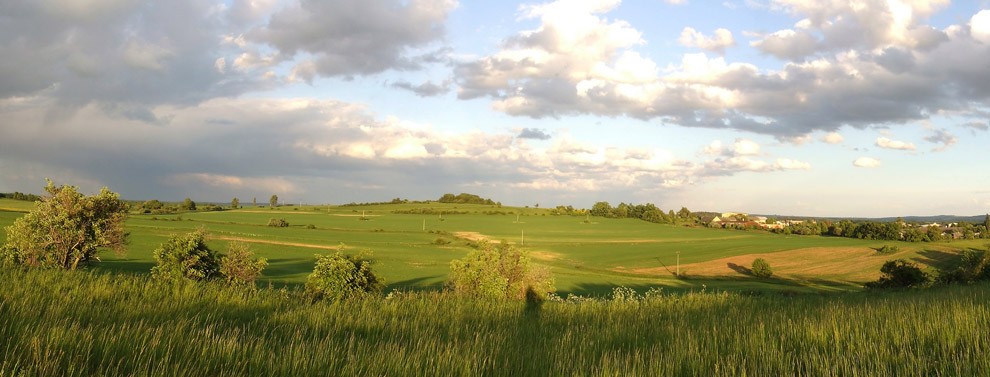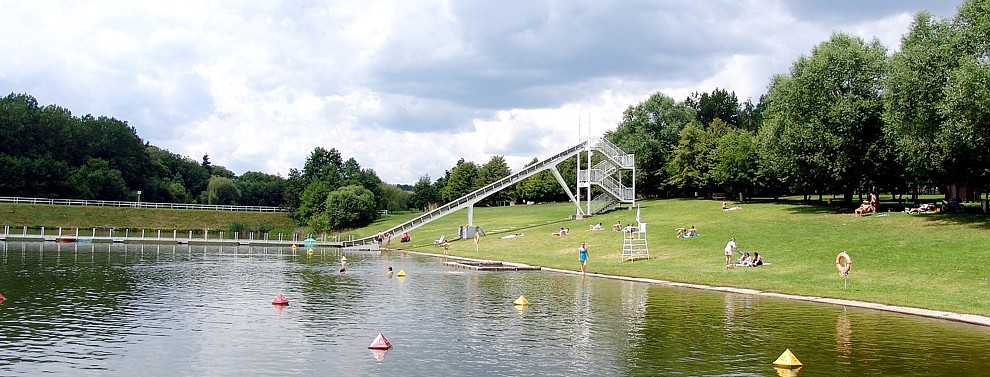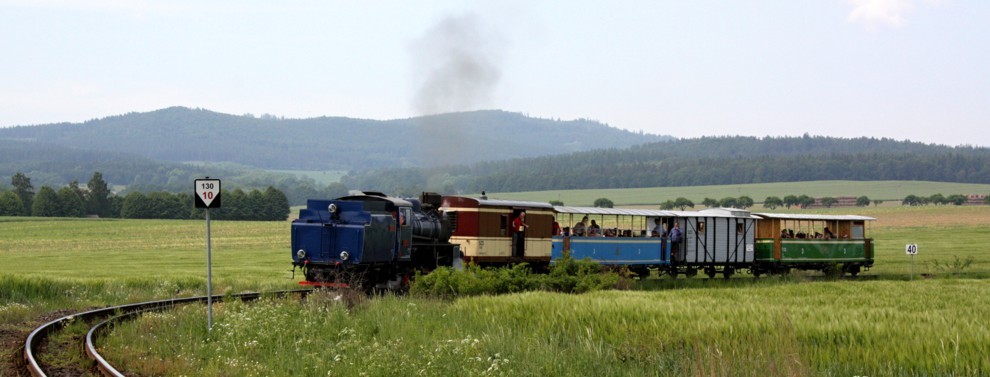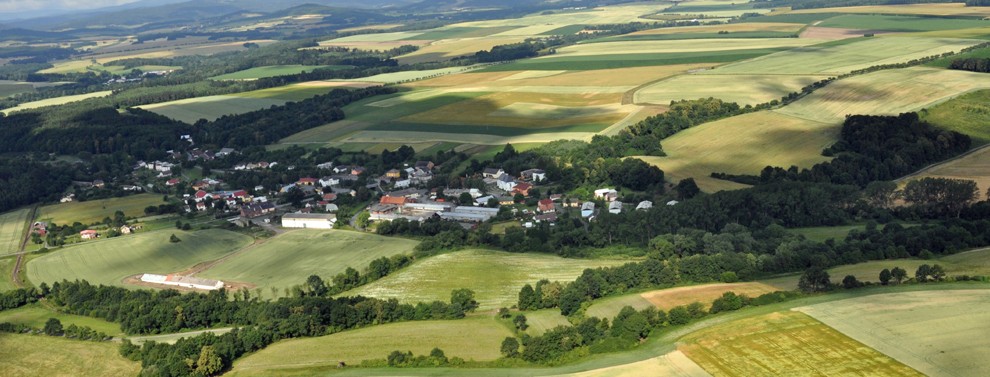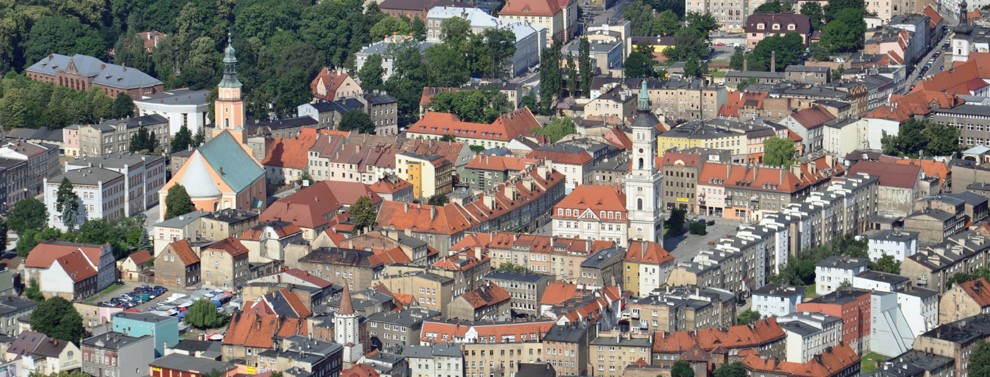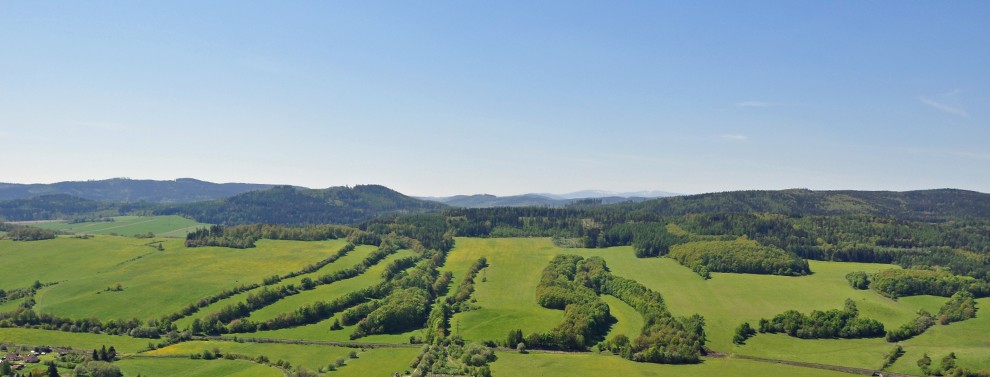Castle ruins Cvilín (Šelenburk, Lobenštejn)
| GPS position: | 50°4′9.532″N, 17°43′40.341″E |
.jpg)
Ruins of a Gothic castle with a tall fragment of the tower and preserved fortification, cellars, and sections of the walls.
The castle was founded by the Przemyslids, soon afterwards in the first half of the 13thcentury got under the Benešovic. The castle was first mentioned in 1238 under name Lobenštejn.
In 1474 it was taken by Matyas Corvinus´ troops. In 1493 the king enfeoffed the estate with the castle to Jan of Šelenberk and Kost, who immediately launched an extensive reconstruction of the castle. Jan's descendants as well continued the rebuilding of the castle and began to call it Šelenburk. Under the rule of Jan of Šelenberk by the turn of the 15th century, other buildings were built around a courtyard. In 1523 it was sold to Margrave George Hohenzollern von Ansbach. The rebuilding of the castle continued and was completed after nearly thirty years. In the 16th century it served as a hunter´s lodge.
Since 1622 the castle belonged to the Liechtensteins. After the Thirty Years War was Šelenburk abandoned and dilapidated.
Nowadays there can be found preserved moats and mounds, remnants of walls and vaults of the palace and buildings, wells and a large cylindrical tower. Water from the well supplied the castle. The well was protected from abuse during the siege by enemies. A few hundred meters from the castle itself there are noticeable ramparts along the foremost fortification (The Swedish Ramparts - Švédské šance).
It served mainly to defend the trade route leading along the river Opava to Krnov and to Silesia. It is located 423 meters above sea level. The large, in the rock carved moat formed an almost regular square, on which the castle was built.
During the archaeological research from 1817 to 1825 have been found medieval pottery and remains of iron objects in the ruins. Further research took place from 1932 to 1945. Furthermore, there were discovered a well, as well as balls thrown from the castle and other items like axes, the remnants of containers and ornamental tile or coins.
Around 1900 the fully plain hill of Cvilín was wooded.
After 1918 the Liechtensteins´ property acquired municipalities.
In 1933 Gustav Adolf Horny, the builder from Krnov, expressed interests in the ruins of Cvilin and he let clean and repair the walls at his own expense. By the clearance of the cellars were discovered remains of the mint. His findings he donated to the Town Museum and he arranged a smaller exhibition held under the shelter directly on the hill of Cvilín.
And as it happens, there is a great treasure hidden under the ruins of the castle. The treasure could be obtained only if someone spent three nights in the castle and knocked over the monsters living there. At the end of the 18th century a young craftsman Theodore tried to do it. However, he took to flight in third night because of haircurling experience. The treasure may be there untill now.
Route:
On green marked footpath cca 3 km far from the town centre of Krnov, leading on the Opavská Street. On the first crossing turn right and follow the Dobrovského Street, Cvilínská Street and Městská Street. You can visit the dokout tower on this route. It is possible to go by car to the boarding house Šelenburg and then cca 1 km on foot through the wood on green marked foothpath. I tis located on the nature trail Cvilín (see Nature – Nature Trails).
Souvenirs:
Certificate can you buy in Penzion Šelenburk. A brochure about castle Cvilín and postcards can you get in TIC.

